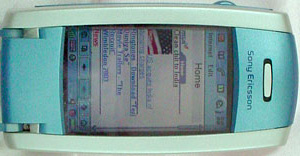If you are a developer and feel developing Web Pages that render the same in IE, Mozilla & Safari where difficult, think again. In PC’s atleast the client test matrix is mainly “3” (even if you include OS dimension, it will be less than “6”) which will target more than 98-99% of your users. This has been possible (though still not perfect) mainly due to W3C standards on HTML.
In contrast if you consider mobile phone web browsers – the scene is anything near order. There are “3” main platforms on the smartphones – Symbian OS, MS Windows Mobile OS & Palm OS. Within each of the OS, the first difference comes from the phone’s Form Factor (Width & Height of the display), next from their markup language support (WML 1.0, 1.1, HTML, XHTML and more) and the third (strangely) from the firmware version loaded in the phone. This leads to your test matrix having to include all the mobile devices that you wish to target. The firmware’s adds a dimension here, especially in many Symbian OS based phones, where each new firmware upgrades the web brower on the device also, which gets your page rendered differently.
The firmware (or browser version) problem is very significant in Mobile, because in Mobile, doing a firmware upgrade means you have to take it to Manufacturer’s service centre and most of the time pay upgrade charges. This is in total contrast to PC world, where almost all the time, the browser version upgrade is free and is matter of a simple download from Internet and install. Even the firmware upgrade seems to be an option available, many times only in Asian Countries like India; it is almost unheard of in the USA and sparingly available in countries in Europe (like in Germany). The only way you can upgrade your phone web browser is to throw the existing phone and buy a new one. Other than Environment concerns of Battery garbage, this exchange offer of phone by itself is not a bad thing, when the smartphone prices plummet to US$100 or so; but till then it is too expensive to even consider as an option.
In this connection, I was happy to see the news today “Opera and Orange seek phone browsing perfection”. This is a welcome development if this effort also means standardising on the browser rendering on Mobile Devices. Let us wait and watch…


